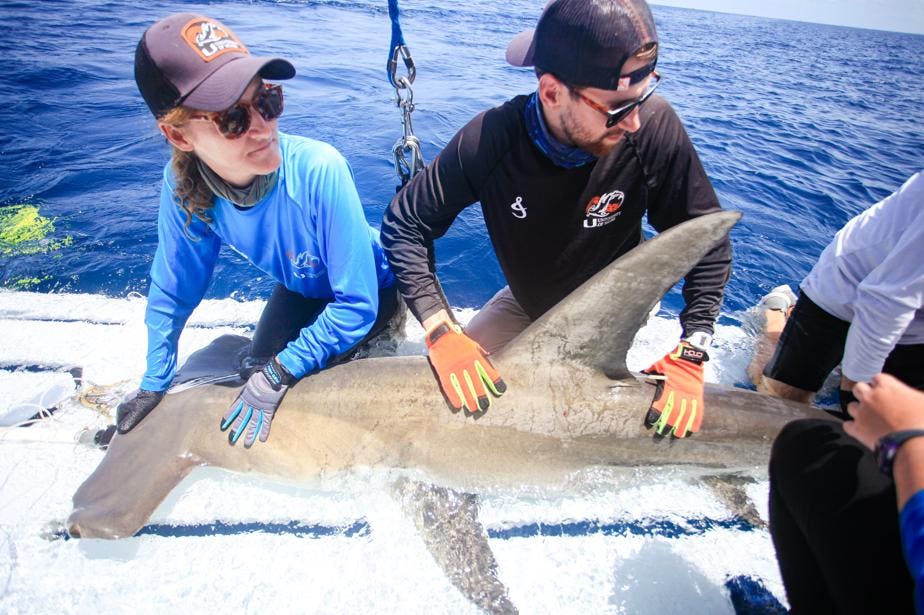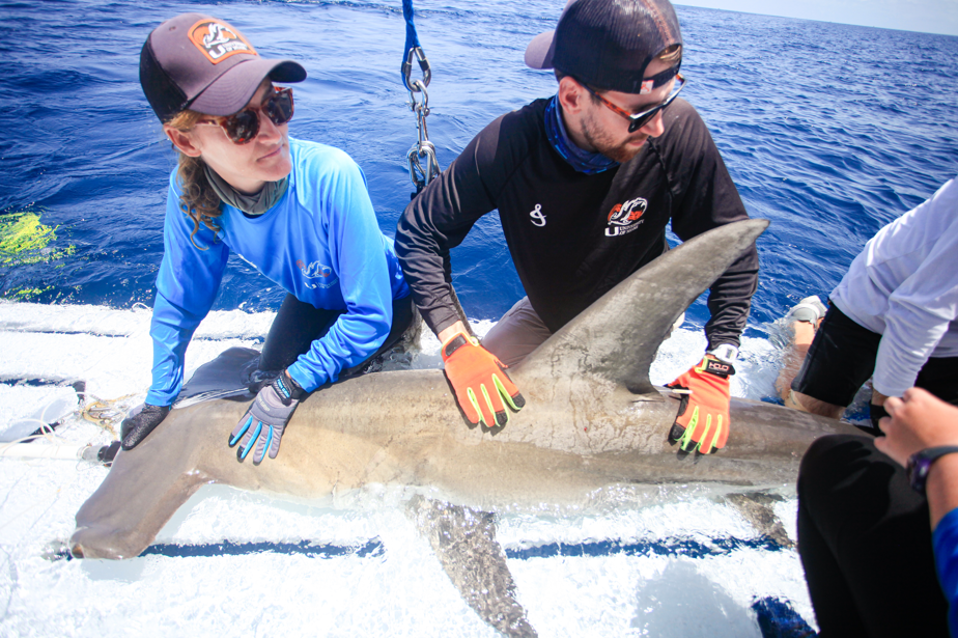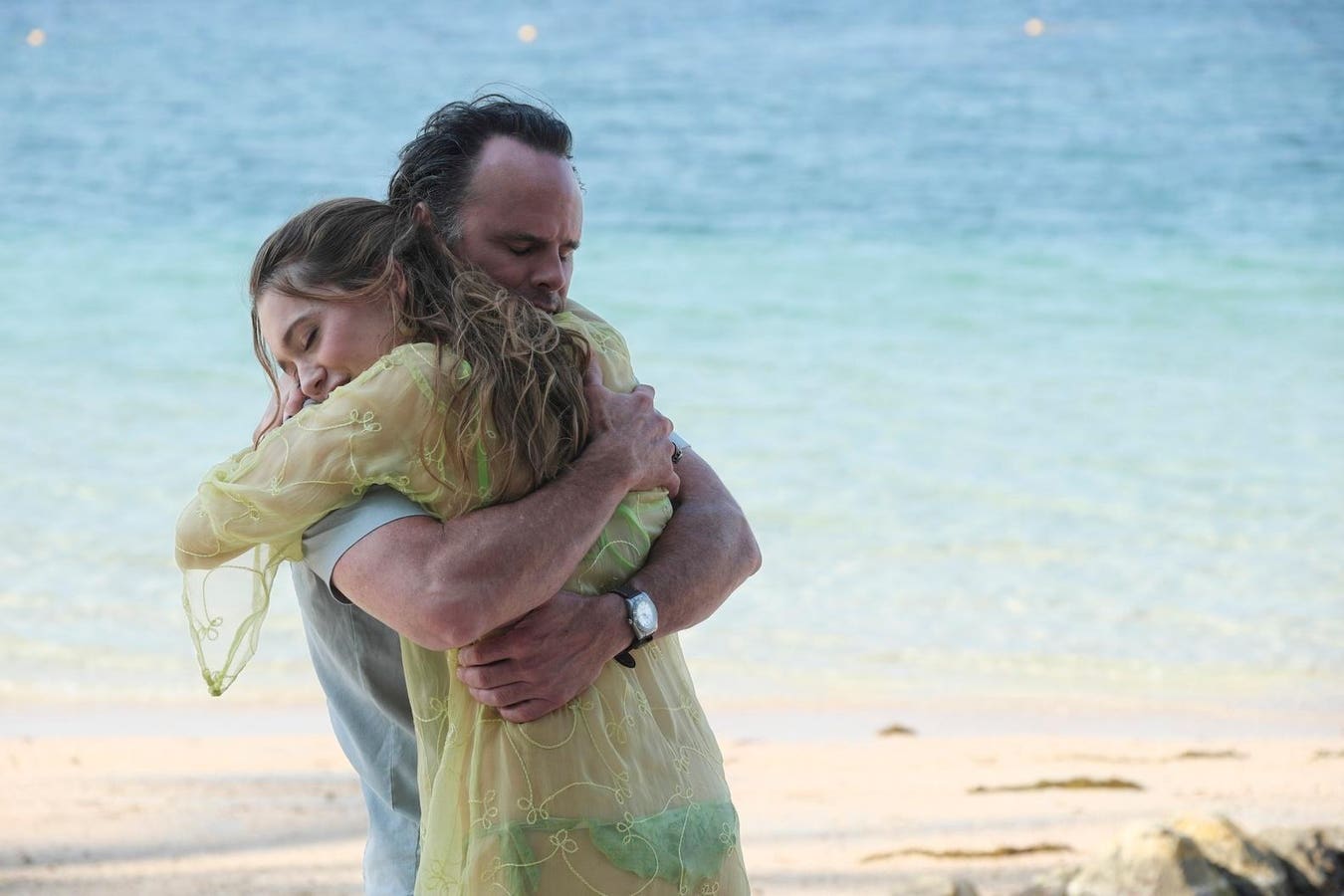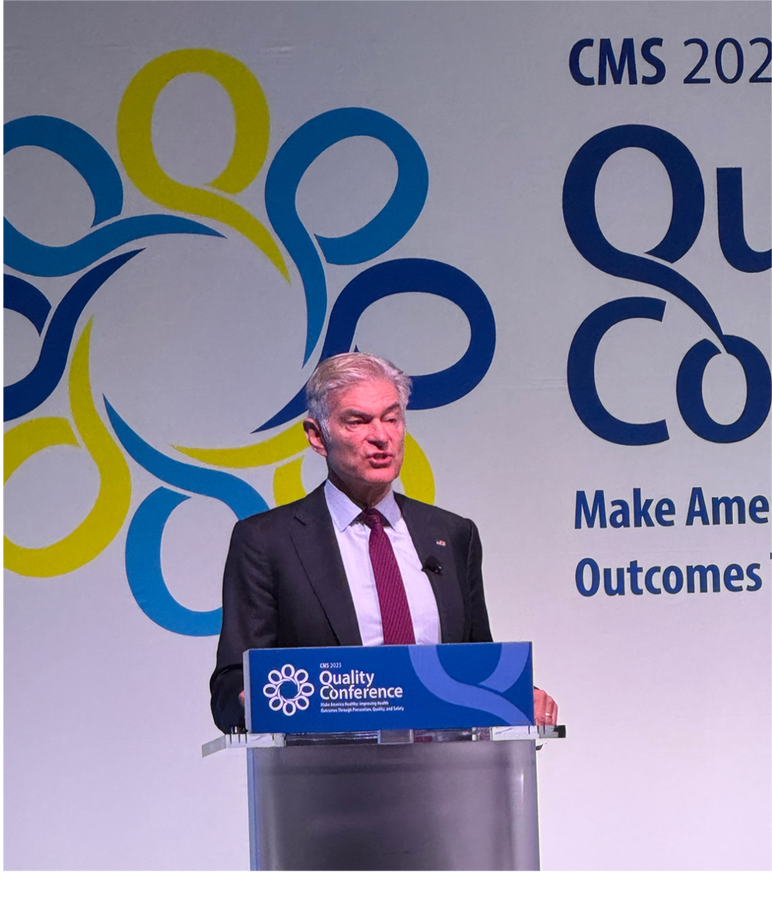An eight-year study highlights Biscayne Bay as a vital nursery and seasonal refuge for great … More
In the warm, shallow waters just off the city of Miami, is a haven for one of the ocean’s most iconic yet critically endangered marine predators. Hidden beneath the skyline, among seagrass beds and mangrove shorelines, Biscayne Bay serves as a sort of “cradle” for the great hammerhead shark, a new study from the University of Miami’s Rosenstiel School of Marine, Atmospheric, and Earth Science confirms. It turns out that juvenile great hammerheads, during their most vulnerable years, rely heavily on the bay as a nursery habitat.
The great hammerhead shark (Sphyrna mokarran) is the largest species of hammerhead, easily recognized by its wide, T-shaped head and tall, curved dorsal fin. Reaching lengths of up to 20 feet (6 meters), these sharks are found in warm, coastal waters around the world. Their unique head shape enhances their ability to detect prey, especially stingrays buried in the sand, and plays a crucial role in their hunting strategy. Despite their formidable size and hunting abilities, great hammerheads are critically endangered due to overfishing, habitat loss, and their sensitivity to capture stress. They often fall victim to bycatch in commercial fisheries and are targeted for their fins. Unlike other sharks that roam vast distances, great hammerheads display strong site fidelity to certain coastal habitats, particularly during juvenile stages.
Researchers examined the feeding and habitat patterns of 62 great hammerhead sharks sampled between 2018 and 2025. Using multi-tissue stable isotope analysis (a non-lethal technique that measures the chemical “fingerprints” left by food sources in muscle and blood plasma) the team tracked both the recent and long-term dietary habits of these animals, allowing them to understand how hammerheads use Biscayne Bay across different life stages.
What they found was striking.
“Juvenile great hammerheads show a constrained diet and habitat use, potentially feeding heavily on … More
For their first two years of life, these young sharks depend almost entirely on the bay’s inshore habitats and prey. After that, they begin venturing to coastal reefs, but they still return to the bay seasonally, usually between late spring and early summer. Some adult sharks even continue to forage in the area, showing that the bay isn’t just important early on but significant throughout their entire lives.
Located in one of the most densely populated parts of Florida, Biscayne Bay has been under pressure for decades. Declining water quality, reduced freshwater inflow, and widespread physical degradation — driven by local rapid urban growth — have vastly changed the ecosystem. What was once a pristine estuary has become a hotspot for pollution, habitat loss, and stress. These changes affect all marine life in the bay, but for the young great hammerheads, they may be especially devastating. “Juvenile great hammerheads show a constrained diet and habitat use, potentially feeding heavily
on small inshore stingrays early in life,” said Dr. Catherine Macdonald, a research associate professor in the Department of Environmental Science and Policy, and the director of the Shark Research and Conservation Program at the Rosenstiel School. “This reliance on a narrow range of prey and habitats makes juvenile great hammerheads particularly vulnerable to human activity and environmental change.” Their limited diet and strong preference for nearshore habitats means they have fewer options if conditions deteriorate or if fishing pressure increases. And fishing pressure is a real concern, since Miami is a major destination for recreational fishing, and great hammerheads are often caught unintentionally. The species is known to be extremely sensitive to capture stress, to that point that even when released, many individuals don’t survive. “Reducing interactions with these sharks — particularly avoiding catch-and-release fishing in key nursery areas — can dramatically improve survival for this endangered species,” said researcher John Hlavin, the lead author of the study and a doctoral student in the Department of Environmental Science and Policy at the Rosenstiel School. “If a shark is accidentally caught, the best action is a quick, in-water release, without photographs that delay the release process.” Every second the shark is out of the water decreases its odds of survival. That’s why responsible fishing is critical, Hlavin continues, especially between March and July, when both juveniles and subadults are present in the bay. Avoiding catch-and-release in known nursery areas could greatly reduce mortality for this species.
The results of the study also offer valuable information for policy makers and conservationists. Stable isotope analysis revealed how tightly tied these sharks are to the bay’s resources, particularly in their early life. This kind of data can be used to create spatial protections, seasonal fishing restrictions, or habitat restoration initiatives. For example, if we know juvenile hammerheads are concentrated in specific parts of Biscayne Bay in certain months, those areas can be prioritized for protection or restricted from fishing during key periods. While protecting open-ocean shark populations is challenging due to their wide-ranging nature, preserving nursery habitats like Biscayne Bay is a tangible, localized way to make a big difference.
Biscayne Bay may lie in the shadow of Miami’s skyscrapers, but it’s also at the heart of this species’ survival. It’s here, in the shallows, where these young sharks take their first bites. It’s here where they learn to hunt, and where they face some of their greatest risks. The future of great hammerhead sharks may depend not just on what happens out in the deep ocean… but on what we choose to protect right here at home.









